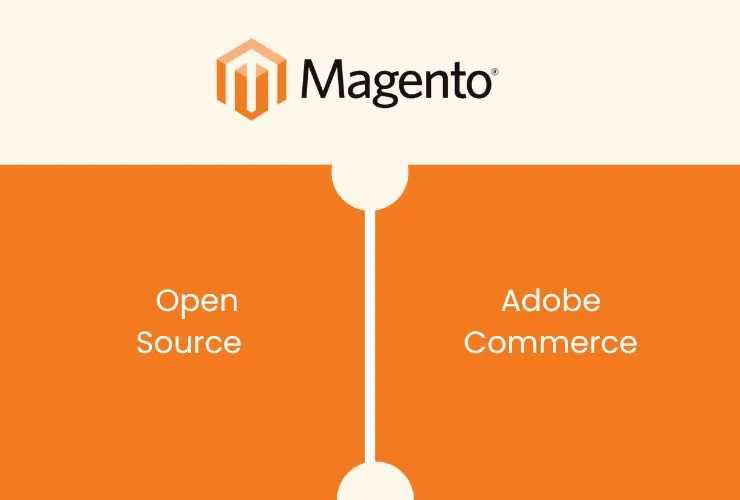Website speed is of prime importance in today’s busy world of eCommerce. Shoppers online expect websites to load virtually instantaneously, and even a single second’s delay can significantly influence user experience, bounce rate, and conversion rates. A slow-loading Magento 2 website not only frustrates customers but also harms your SEO rankings and your potential for revenue.
Magento 2, although being feature-laden and strong, can become a performance killer if not optimized. Hence, the key to keeping the performance at an optimum level is to implement an overall speed optimization strategy. What is provided below is the tried and tested solution to increase your Magento 2 store’s page loading speed and provide a snappier shopping experience.
1. Turn on Full Page Caching
Magento 2 has native support for full page caching (FPC), arguably the best way to improve performance. Caching stores a static copy of pages so that Magento will not need to dynamically construct them on every request.
Although the built-in cache is helpful, using Varnish Cache is even more beneficial in terms of performance enhancement. Varnish is intended to deliver cached content more quickly and support more concurrent users. Ensure your cache settings are properly set up within Magento’s system settings to benefit fully from this feature.
2. Utilize a Content Delivery Network (CDN)
A CDN reduces latency by serving static files (such as images, JavaScript, and CSS) on servers that are geographically closer to the end-user. Not only does this increase load times, but also decrease the load on your main server.
Services like Cloudflare, Fastly, and AWS CloudFront are all well-liked by Magento and can fit in well with your store. The result is faster and more stable page loading times geographically, which is especially useful for global eCommerce businesses.
3. Optimize Images for the Web
High-definition photos are a mandatory part of any modern eCommerce site, but they’re also one of the greatest guilty parties when it comes to slow page loads. To gain speed without sacrificing quality, image optimization is necessary.
Start by compressing pictures with tools like TinyPNG, ImageOptim, or through online resources before uploading them onto your website. Utilize newer formats like WebP, which accommodate smaller sizes while maintaining equal quality. And utilize lazy loading so that images only load once they hit the viewport—reducing initial page load time.
4. Minify and Merge CSS, JavaScript, and HTML
Minifying and combining CSS and JavaScript files reduces the number and size of files your site loads, which is root-level frontend optimization. Magento 2 provides you with the ability to combine and minify CSS and JavaScript files, reducing the data to be transmitted and processed by the browser.
By activating these options and placing your site in production mode, you only serve optimized and compressed files to users. This also improves rendering speed and reduces time to interactive (TTI), particularly on mobiles.
5. Activate Flat Catalogs (older versions)
On Magento 2.3 and older merchants, having flat catalogs on also enhances product and category page performance by ensuring easier querying of data from the database. It achieves this by constructing fewer, flatter database tables that deny the occurrence of joins inside catalog operations.
However, it’s important to note that this feature is being phased out in newer versions of Magento due to improved indexing and database handling. Use it only if you’re running an older version and experiencing performance issues with large catalogs.
6. Switch to Production Mode
Magento 2 supports three operating modes: default, developer, and production. Production mode is tailored for live environments with performance-driven configurations.
When your site is live, excessive error reporting and logging are disabled, and precompiling of static files occurs. This saves server resources and loads pages more quickly to your customers. Ensure that your store is not in developer or default mode on a live server, as this can have a large impact on performance.
7. Audit and Manage Third-Party Extensions
Extensions have the ability to add functionality to your store, but they also have the ability to lead to performance issues if they’re not developed or managed properly. Having too many extensions—or even several that are not written very well—can slow your site down and lead to conflicts.
Perform regular audits on all third-party modules. Remove unused extensions, and enable active ones from good developers with high support and performance ratings. Observe your site’s performance after installing or updating any extension to see any negative impact.
8. Update Magento
Every Magento release includes bug fixes, security patches, and often, performance enhancements. Running an old version of Magento is to be missing out on these upgrades and potentially even leaving your site vulnerable to security breaches.
Test the new version on a staging site before upgrading and ensure all your custom modules and themes are supported. Upon testing, upgrade your live site to Magento best practice standards to ensure low downtime and error levels.
9. Configure Backend Caching and Session Handling using Redis
Redis is a performance-oriented key-value store that performs much faster than the standard file-based cache. Redis can also be used to cache backend content and manage user sessions, reducing server loads and accelerating page delivery.
With Redis, you can also deliver more concurrent sessions and perform better during traffic spikes. It’s especially useful for high-traffic e-commerce websites that require performance and scalability.
10. Implement Asynchronous Indexing
Heavy product lists can hamper processes like checkout, product reindexing, or admin activity if indexing is synchronous. Asynchronous indexing enables Magento to index in the background, allowing the frontend to remain responsive without any performance blockage.
It’s especially vital on enterprise websites that feature thousands of products or constant changes in inventory. Offloading indexing tasks will enable you to preserve frontend performance without affecting business processes.
Conclusion
Magento 2 is a powerful platform, but performance relies on how well it’s fine-tuned. Slow loading speeds can damage your brand, compromise your search rankings, and destroy your revenue. Through the techniques outlined above—from caching and CDN implementation to image optimization and extension management—you can create a faster, more solid eCommerce experience for your customers.
Page speed is not just a technical issue—it’s a business necessity. Spend the time to optimize now, and your store will be ready to scale and thrive in a highly competitive marketplace.













